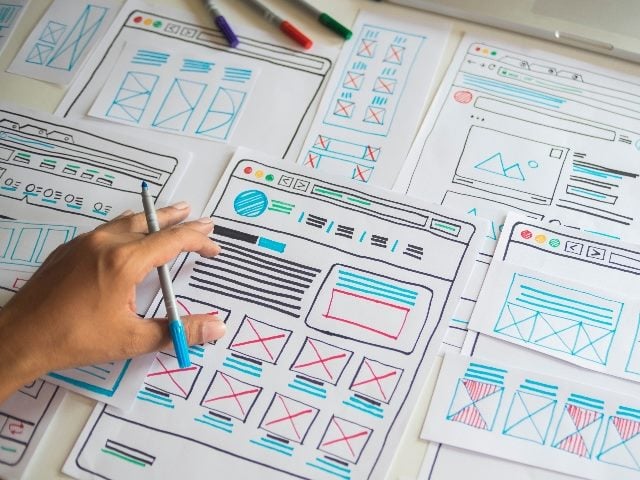The Gist
- Cost savings. User experience design enhances cost efficiency by reducing waste and increasing productivity, avoiding expensive redesigns and post-launch fixes.
- Customer loyalty. Superior UX boosts customer retention by improving satisfaction and engagement, making it crucial during economic downturns.
- Strategic edge. Investing in UX offers a competitive advantage and long-term success, differentiating brands in crowded markets.
"Good design is good business." — Thomas J. Watson, IBM’s former CEO
As economic pressures intensify and budget cuts become a harsh reality, many organizations face difficult decisions about where to allocate resources. In these challenging times, the ROI of user experience design becomes more critical than ever. In fact, for C-suite leaders, demonstrating the tangible value of UX is essential to ensure its place at the strategic table.
I am sharing from my experience: three key points to consider in making the case for the new ROI of user experience amidst cutbacks.
How to Boost the ROI of User Experience
1. Cost Efficiency: Reducing Waste and Boosting Productivity
In an era of budget constraints, every dollar must be spent wisely. UX design offers a pathway to cost efficiency by reducing waste and boosting productivity. When UX is integrated early in the development process, it helps identify user pain points and streamline workflows, leading to fewer costly redesigns and less time spent on fixing errors post-launch.
Example: Airbnb is a prime example of a company that prioritizes UX to drive efficiency. By focusing on seamless user interactions and anticipating user needs, Airbnb has minimized customer support queries and increased booking conversions. Even during the pandemic, when travel was heavily impacted, Airbnb’s strong UX foundation helped it pivot quickly to offer online experiences, preserving revenue streams.
My insight: while cutting back on UX might seem like an immediate cost-saving measure, it can lead to longer-term inefficiencies. Investing in UX, even during downturns, ensures that products and services remain user-friendly, reducing the need for expensive fixes later.
2. Customer Retention: Enhancing Loyalty Through Superior Experiences
Customer loyalty is more valuable than ever, and UX is a key driver in keeping customers engaged and satisfied. During times of economic uncertainty, customers are more selective with their spending, and a superior user experience can be the differentiator that keeps them coming back.
Example: Spotify continuously invests in UX to enhance user engagement and loyalty. By tailoring experiences through personalized playlists and intuitive interfaces, Spotify has maintained a strong subscriber base, even as competitors emerge. Its UX-driven focus on ease of use and personalization has proven to be a critical factor in retaining customers.
My insight: In challenging economic climates, retaining existing customers is often more cost-effective than acquiring new ones. Superior UX strengthens customer relationships, turning users into advocates who not only stay but also spread positive word-of-mouth.
3. Strategic Differentiation: Standing out in a Competitive Market
In crowded markets, UX can be the strategic differentiator that sets a brand apart. While competitors may slash UX budgets in favor of short-term gains, companies that continue to invest in UX position themselves for long-term success by offering unique and compelling experiences that resonate with users.
Example: Apple has consistently leveraged UX as a differentiator in a highly competitive tech market. Despite premium pricing, their commitment to intuitive design and user satisfaction has created a loyal customer base willing to pay for products that offer unparalleled user experiences. This focus on UX has been integral to Apple’s brand identity and blue ocean.
My insight: As competitors cut corners, in the long run, this strategic differentiation can lead to higher customer acquisition and retention rates.
Related Article: What Is User Experience (UX) Design?
Understanding the ROI of User Experience: A Strategic Imperative
According to a study by Forrester, companies that invest in UX see a return of up to $100 for every $1 spent on design.
Research by the Design Management Institute shows that design-led companies have outperformed the S&P 500 by 219% over the past 10 years.
A report by PwC found that 73% of consumers point to customer experience as an important factor in their purchasing decisions, with UX being a critical component.
So, the way I will make a closing to this article is that, simply put, by driving cost efficiency, enhancing customer retention and providing strategic differentiation, UX proves its value not just as a cost center, but as a critical investment for long-term success. C-suite leaders who recognize and champion the new ROI of UX will position their organizations to thrive, even in challenging times.
Learn how you can join our contributor community.
